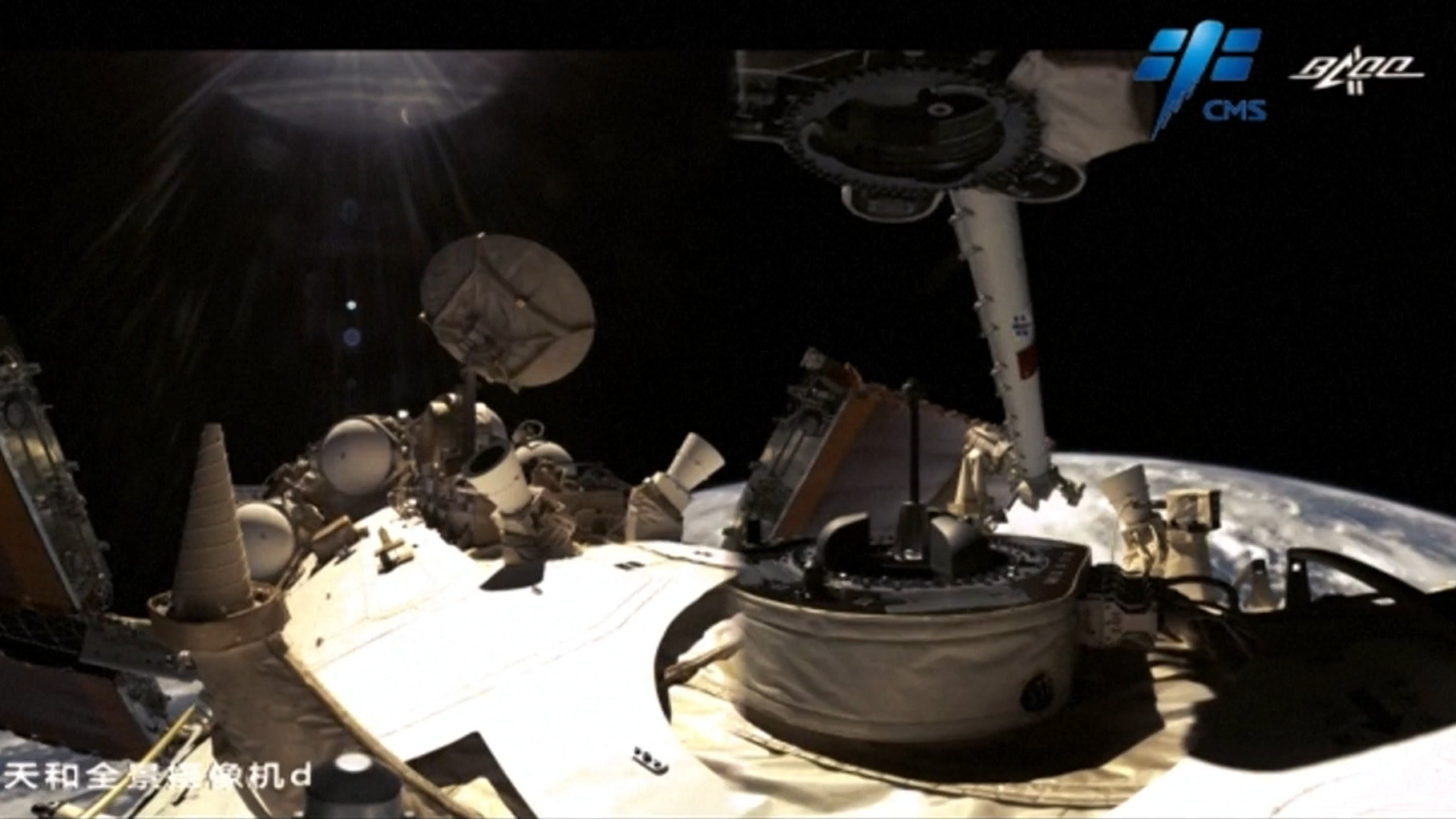See a large robotic arm 'crawl' across China's space station (video)
Footage from China's space station shows how its large robotic arm can "crawl" along the outside of the spacecraft.
The new video from the Chinese Manned Space Agency (CMSA) shows the space station's 33.5-foot-long (10.2 meters) robotic arm rising up from behind the Tianhe module and reaching out to find a docking port in the foreground.
The footage was captured by panoramic camera D on the Tianhe core module, which launched to China's new Tiangong space station in April 2021.
Video: See the Chinese space station's robotic arm in action
Related: On China's new space station, a robotic arm test paves way for future construction

The robotic arm has been used in a number of operations, including assisting crews with extravehicular activities, or spacewalks, as well as systems and apparatus checks. Space station operators and astronauts have also used the robotic arm to grasp and maneuver the Tianzhou 2 cargo spacecraft, which arrived at the station last year.
The Tianhe robotic arm will be used to move new modules due to arrive in orbit in the second half of 2022, relocating them from a frontal docking port to lateral ports to complete the planned T-shaped, Tiangong space station.
Canadarm2, a similar robotic arm that was installed on the International Space Station in 2001, can also travel across the ISS, using fixtures placed on the outside of the station. It also handles heavy payloads and assists astronauts on spacewalks.
Get the Space.com Newsletter
Breaking space news, the latest updates on rocket launches, skywatching events and more!
Follow us on Twitter @Spacedotcom and on Facebook.
Join our Space Forums to keep talking space on the latest missions, night sky and more! And if you have a news tip, correction or comment, let us know at: community@space.com.

Andrew is a freelance space journalist with a focus on reporting on China's rapidly growing space sector. He began writing for Space.com in 2019 and writes for SpaceNews, IEEE Spectrum, National Geographic, Sky & Telescope, New Scientist and others. Andrew first caught the space bug when, as a youngster, he saw Voyager images of other worlds in our solar system for the first time. Away from space, Andrew enjoys trail running in the forests of Finland. You can follow him on Twitter @AJ_FI.









